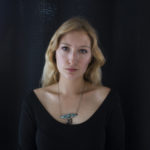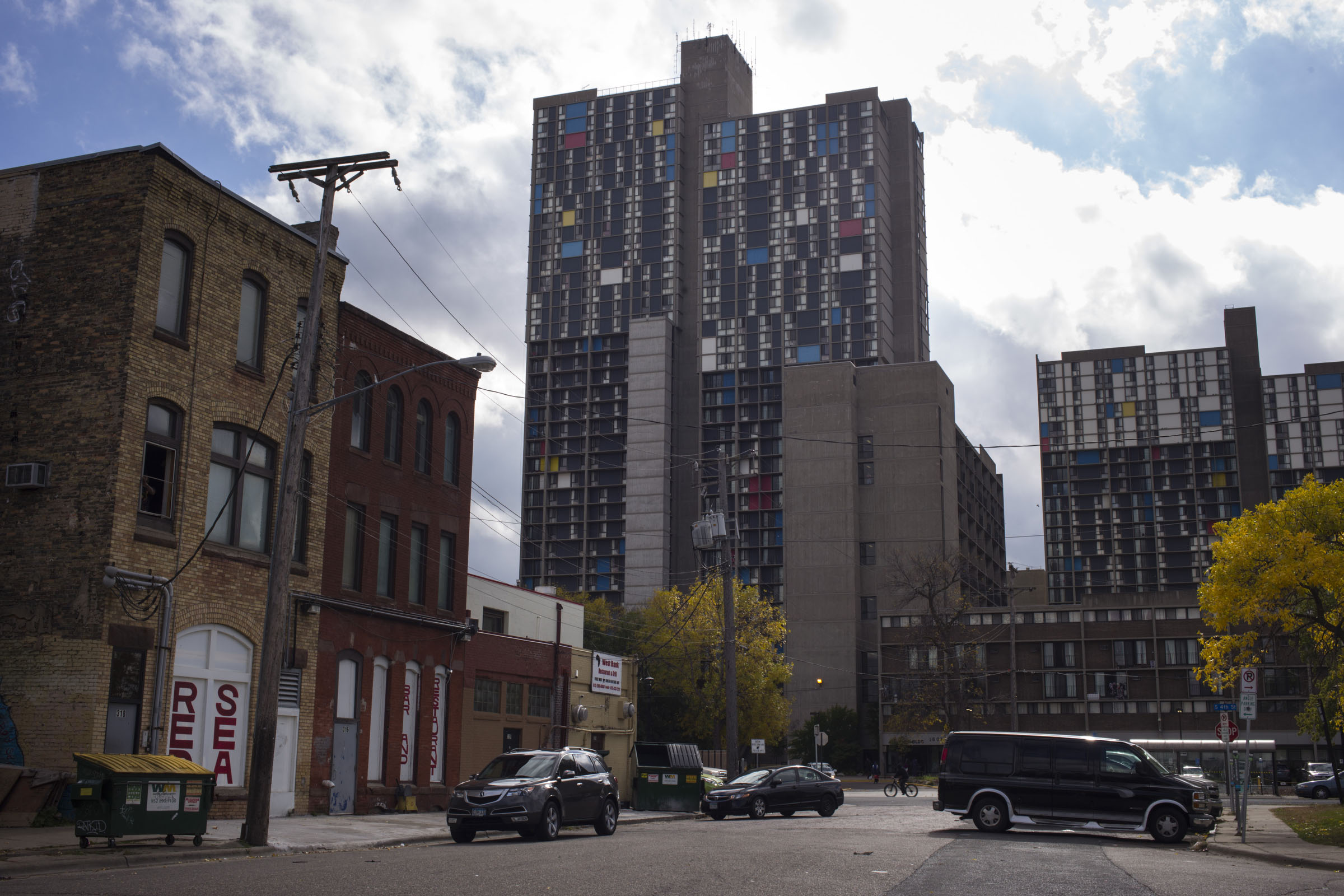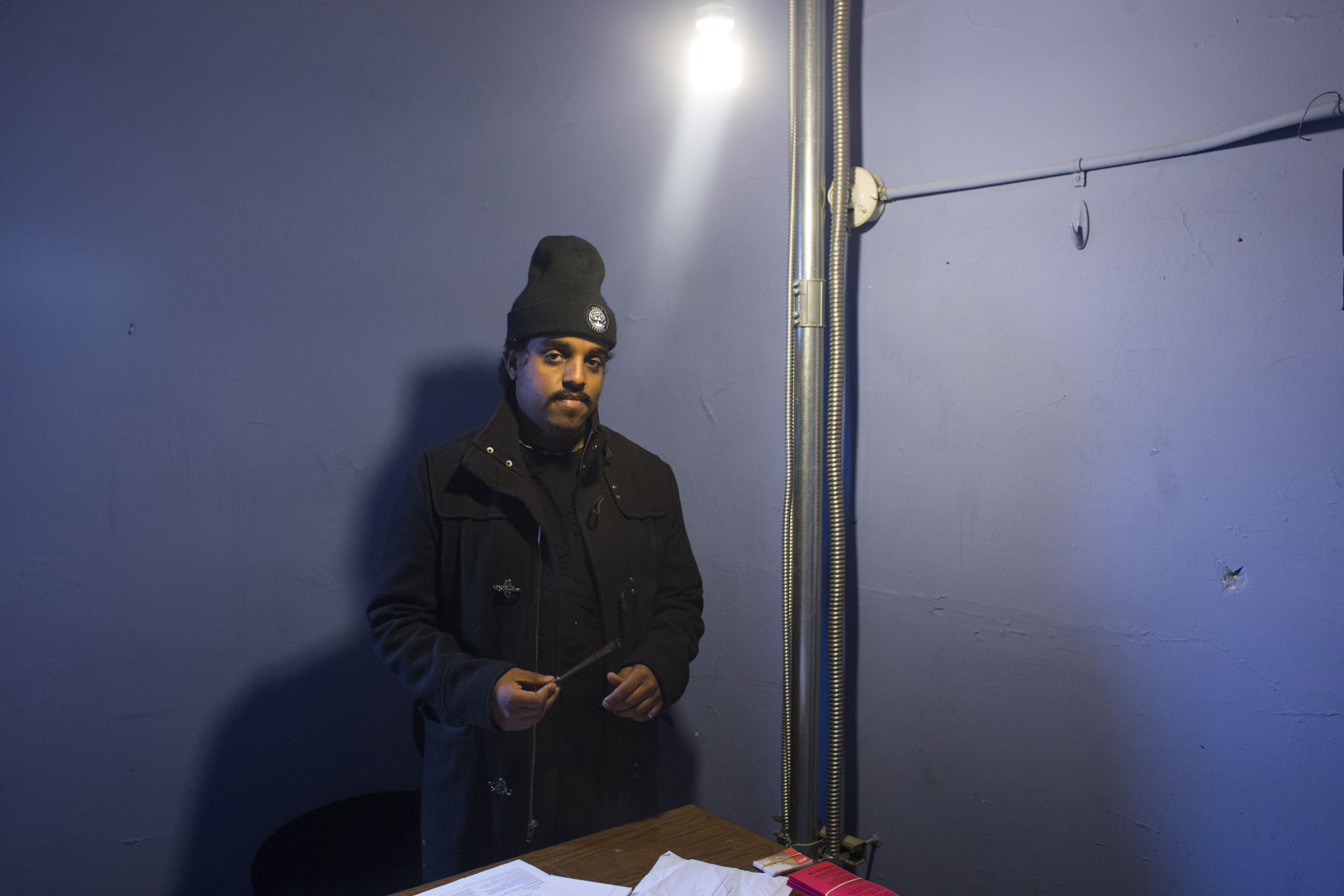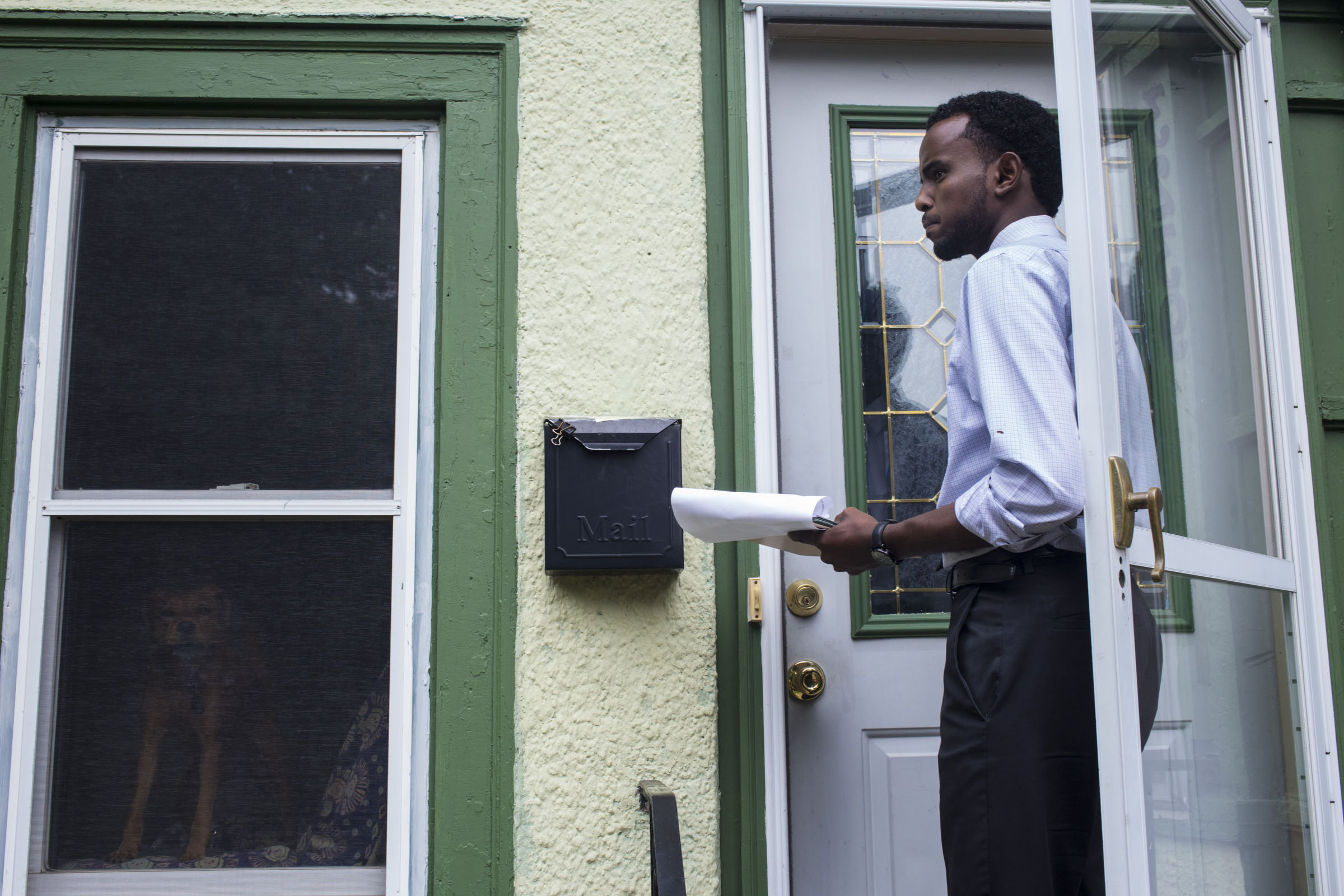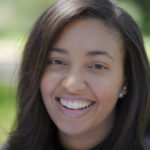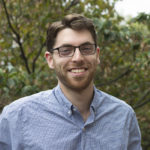Minnesota:
Introduction

Minnesota is home to the majority of the Somali diaspora in the United States. In many respects, the Somali-American experience is a classically American story, shared by immigrants and children of immigrants before them. Those who remember Somalia’s sun and sands — and civil war — strike a balance between old and new, and contend with the culture of the generation that was born or raised here. But the younger generation navigates a reality perhaps more complicated than the Scandinavians who occupied the Cedar-Riverside neighborhood before them: They are black, Muslim and immigrants in this deeply divided America.
Explore the team’s reporting below, and follow their daily journey at xthedivide.org.
Minnesota:
Across generations, Somali-Americans balance old and new
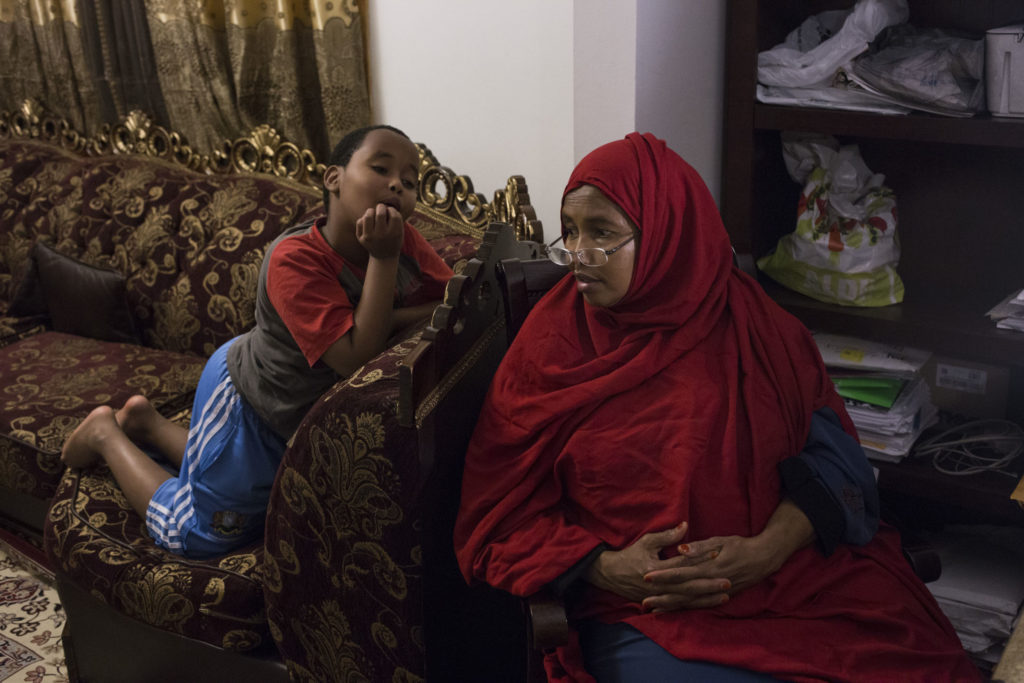
MINNEAPOLIS — A hijab topped with a backwards baseball cap — it’s a combination not unheard of here in the Cedar-Riverside neighborhood. Known by some as “Little Mogadishu,” it’s a place where cultures meld and the immigrants who move here struggle with their new American identities — going back long before Somalis arrived.
In Minnesota, home to the majority of the Somali diaspora in the U.S., Somali-Americans who don’t remember Somalia, or have never been there, strike a balance between old and new. Like many immigrants and children of immigrants before them, they now balance the preservation of their native culture with American identity. Those who remember Somalia’s sun and sands — and civil war — contend with the culture of the generation that was born or raised here.
The residents of Cedar-Riverside have established some parameters for what they will tolerate from people outside of their community. In April, community leaders admonished, and called police attention to, a “sharia vigilante” who moved here from Georgia. Then, in September, HBO decided to halt the production of a show called “Mogadishu, Minnesota” after local residents protested, citing concerns that the show would stereotype Somalis as potential terrorists.
In a more private way, Somali-Americans are also navigating what is culturally acceptable within the community
“What we adopt at home is to keep our tradition and our way of life, which stems from our beliefs, culture and habits,” said Abdulkadir Said — a 68-year-old oud player who is known by his stage name, Argos. “But when we go out, we have to adjust ourselves…we have to conform to certain levels by remembering what’s acceptable and what’s not acceptable.”
Unlike Argos, whose artform is traditional, his 31-year-old daughter Ifrah Mansour is a multimedia and performance artist. She is known among older women in the community as “the nice and the naked” because she wears pants. Both father and daughter create works for children, but their approaches are different. The oud that Argos plays is a short-neck lute commonly used in Somalia. With it, he performs traditional Somali songs and stops to translate as he sings. Mansour, whose work is currently part of an exhibit at the Minnesota Institute of Art, says her intended audience is generally children who don’t understand the Somali language and who are navigating their complex identities.

“Unless you’re here, where there’s a noticeable Somali community, you don’t have an option to say, ‘I am Somali,’” Mansour said. “You just have black or African. Prior to that, it was just African-American.”
In many respects, the Somali experience in Minneapolis is a traditionally Minnesotan story. Less than a century ago, about 20 percent of the state’s residents were foreign-born immigrants, according to the Minnesota State Demographic Center. Cedar-Riverside in particular has long served as a gateway for new Americans.
In the 1890s, before it had its current nickname “Little Mogadishu,” the area was known as “Snoose Boulevard” and was home to Scandinavian immigrants who worked in lumber or milling industries. Now, bordered by the Mississippi River and two interstate highways, Cedar-Riverside is flanked by downtown Minneapolis and the University of Minnesota. Speckled with halal food markets, restaurants, cafes and theaters, the urban area is a vibrant concoction of student and Somali cultures. In the neighborhood distinguished by its landmark brutalist high rise buildings, Somali-Americans are adapting to a new country while honoring their roots.
Forty percent of Cedar-Riverside’s population is foreign born — double the citywide figure. Also double are the rates of poverty and unemployment. Despite those disparities, Somali-Americans are able to preserve and pass down their culture more easily thanks to this concentration of Somali immigration in this gateway neighborhood — and in the state of Minnesota as a whole.
After a bloody civil war caused the collapse of Somalia’s government in 1991, many Somalis who were displaced came to the state as refugees. About half of the Somali-American population in Minnesota lives outside of Hennepin County, which includes Minneapolis.
The music Argos plays has stayed the same since coming to the U.S., but little else in his life has.
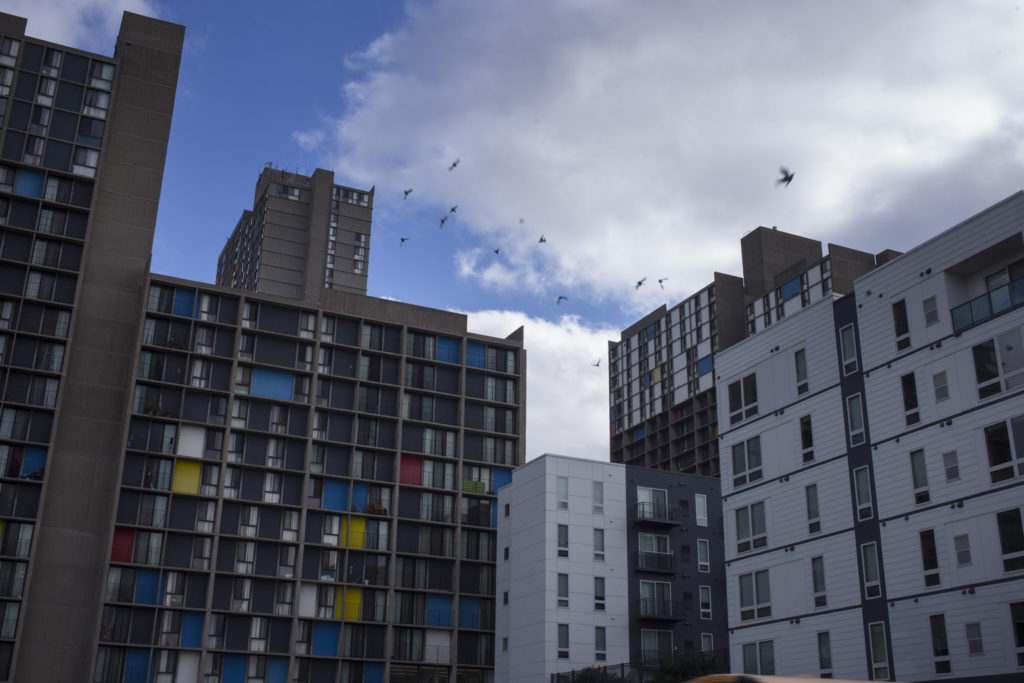
“Tradition is the rules and ways that someone should conform to in order not to conflict with others,” Argos said about tradition in both countries. “Now, we are in America, and we consider America.”
While her father strives to conform more to America, Mansour, who grew up in the United States, strives to stay connected to her Somali identity.
“I’m a big supporter of people who don’t look traditional, like me, but they still have deep roots to their community,” Mansour said. “I’m always amazed with what people do to keep their culture. I feel like I do that with my art, because that’s really important for me. In my art, I try to reclaim my story in the way that I want to tell it.”
Art, in varied forms, is a foundation of Somali culture. Stemming from the country’s history of nomadic pastoralism, oral tradition became the way to relate genealogy, culture and identity, as elders educated and entertained younger generations around a fire while tired livestock rested.
“There’s this beautiful thing that Somali elders do to teach, and everybody is expected to learn,” Mansour said. “Your dad would have memorized his entire lineage, and then he would teach you, as a kid, and then you would teach your kids. Your parents would also tell you your family’s history, all the way to the nomadic time.”
However, as younger generations grow up in Minnesota, differences in language impede those lessons. Mansour explained that after moving to the United States at the age of 10, she lost her native language from lack of practice. Since then, by teaching English to Somali elders in Cedar-Riverside’s Brian Coyle Center, a community center, she’s regained the ability to speak Somali. Now, elders tell her she is finally Somali.
“They always say, ‘Remember when you came to us? Zero culture. Zero language. And now look at you!’” Mansour said. “The elders would often ask me, ‘are you really Somali?’ I would say ‘yes,’ and they would say ‘can you speak Somali?’ I’d try to speak Somali and they’d say ‘you learned it later. Are you sure?’ It’s so scary for me to realize that the younger generation has to prove its Somaliness.”

Elders have also questioned young people’s interpretation of storytelling and poetry. On the stage of Cedar-Riverside’s Mixed Blood theater, Abdurazak Omar — a 20-year-old poet and hip-hop artist better known by his stage name Sisco — performs poetry. Though he considers his work a continuation of Somali tradition, elders sometimes tell him otherwise. As he was growing up, because his parents remained in Africa, other adults in the community would advise his guardians to tell him to dress differently or to stop performing as a hip-hop artist.
“There isn’t a difference if I’m doing a poem in Somali or in English,” Sisco said. “My music is poetry also. What I do is storytelling. The misunderstandings are with the elders who haven’t adapted to an American or Western lifestyle, and the language plays a role in it.”
Sisco’s wife, Hani Ali, said she was originally attracted to him because of his rapping, and got to know him through his songs. But the couple had to keep his career secret from her Somali parents until they were officially married. Otherwise, the wedding may have been called off, she said.
Beyond differences in language and culture, the older population that grew up in Somalia does not think of governance in the same way as their children or grandchildren, who only know or remember Western culture, amid the snow and prairie of Minnesota.
“I remember one day the elders were concerned, because young people started to get in trouble,” said Abdirizak Bihi, 52, director of the Somali Education and Social Advocacy Center in Cedar-Riverside. “When you hear someone is in jail, at that time in the Somali mind, it’s like torture.”
In fact, when the now-older generations first arrived, they feared of government and police, based on their experiences in Somalia. “One thing that I really remember is that, to break the fear of government and to educate people that here people are free, was to hold assemblies and sometimes criticize local governments and the police departments,” he said. “People would be shocked.”

The older generation would rather engage in dialogue than take to the streets, Bihi says, like they’ve seen with the recent Black Lives Matter protests in the Twin Cities. Older generations, however, did not experience the racism that young Somali-Americans face in the current U.S. climate of prominent anti-immigrant and anti-Muslim sentiments, Bihi said.
Ifrah Mansour, the 31-year-old artist, also made this observation.
“I have a vivid memory of being in a society where everyone spoke the same language, everyone looked like me and everyone was Muslim,” Mansour said. “I feel like kids here don’t have that. These kids have America, racism and terrorism to deal with on top of [pressure from elders]. So, [elders] need to be in their support system. And as much as [they] want to beat them with a lesson, it’s not going to work.”
But elders also need a support network, Mansour says. Older Somalis, many of whom don’t have strong English skills, are limited in where they can live, even as younger family members move away.
“The older generation usually is limited in terms of residential areas,” Bihi said. “They usually live in complexes, like in this neighborhood, where they have their own mosques, grocery stores and all of their business are here.”
Bihi came to Minneapolis in 1996 to work as a cultural counselor and interpreter, as the Somali population grew. He has served as a member of the Somali-American task force, a U.S. Attorney’s Office program aimed at combating terror recruiting in the state, after his nephew was recruited and killed by al-Shabab.
“I volunteered for an agency that works in processing refugees,” Bihi said. “I got to know the community before they got here. Things were different … Most of them were not from main cities. This is where everyone started. It’s still a gateway, and whatever we do here, whether it’s combating radicalization, starting sports leagues or celebrating Somali Day, it actually impacts every other state where the community lives.”

Now, as multiple generations of Somali-Americans work and live in Minnesota, Bihi takes note of the differences between them.
“Somalis really take a lot of pride in their culture and in their history,” Bihi said. “They hang onto their Somali identity. That’s the older folks. But, they don’t consider the younger generation. Identity crisis is a big issue, because they’re still struggling to define their identities. Are they black? Are they African-American? Are they Somali-American? Are they Muslim or Muslim-American? They have all of those identities pushed on them.”
Bihi believes that often contrasts dramatically with members of older generations, people whose identity is already formed and who hope to someday return to Somalia.
“The older generation, they have a bigger issue,” Bihi said. “We are having difficulties getting them to focus here. They’re looking back to Somalia on a daily basis, hoping that Somalia becomes peaceful.”
Ifrah Mansour, through her experience teaching, holds a different opinion.
“The elders that I work with, I feel like they are isolated, but I’m always amazed by how much they are interested in the American culture,” Mansour said. “They’re interested, and they want to participate. They want to go and vote and make informed decisions, and sometimes that means just knowing a little more English. Or asking people who are not Somali like them their opinions.”
 A version of this story appeared on MinnPost on January 18, 2018
A version of this story appeared on MinnPost on January 18, 2018Minnesota:
Photo Essay: Somali Roots Grow in Minneapolis
Arriving in the Cedar-Riverside neighborhood of Minneapolis, my goal was to tell the story of generational divides within the Somali-American community there. My intention was to gain as much access to this community as possible.
But when I started asking people if I could photograph them, their fear was palpable. I had to come face to face with why. Many feared their photos yet again appearing in articles about radicalization. They feared that certain images showing where they prayed would put them at risk for anti-islamic violence. They also feared their neighborhood was being treated as a human safari.
This community, this group of Americans, had been stripped of its integrity in the national media. I was left with a decision: Would I keep pushing and risk alienating people, or would I accept that my images weren’t going to be as intimate or in-depth?
And so, I backed up and I backed off. I chose not to join the ranks of press before me. I decided that my ultimate priority was to leave a positive memory in their minds. I decided that my role as a journalist this time was to be understanding, empathetic and ultimately kind in such a politically divisive time. I sought out individuals who whole-heartedly wanted their stories told. I let the portraits represent a collaboration between us. Before I hit the shutter, I looked for what made this person special outside of their cultural identity. I asked myself if the image would do them justice or play into a stereotype.
I am grateful for our reporting in Minneapolis. Principled journalism isn’t only about the end product. It’s also about how you get the story and what remnants you leave behind. I realized that in order to be a public servant, you have to question your own approaches. In other words, to truly cross the divide, we sometimes have to be comfortable waiting patiently on the other side.
Minnesota:
Organic farm program opens doors for Somali-American growers
From women’s boutiques to neighborhood cafes, it’s easy to spot the Somali entrepreneurial spirit in Minneapolis’s Cedar-Riverside neighborhood. But now, some Somali-Americans are beginning to look outside the city limits for entrepreneurial paths, and organic farming in rural Minnesota is gaining some traction.
Through a farmer training program in Washington County, a small but growing group of Somali-Americans are hoping to boost incomes and improve access to healthy food in their community.
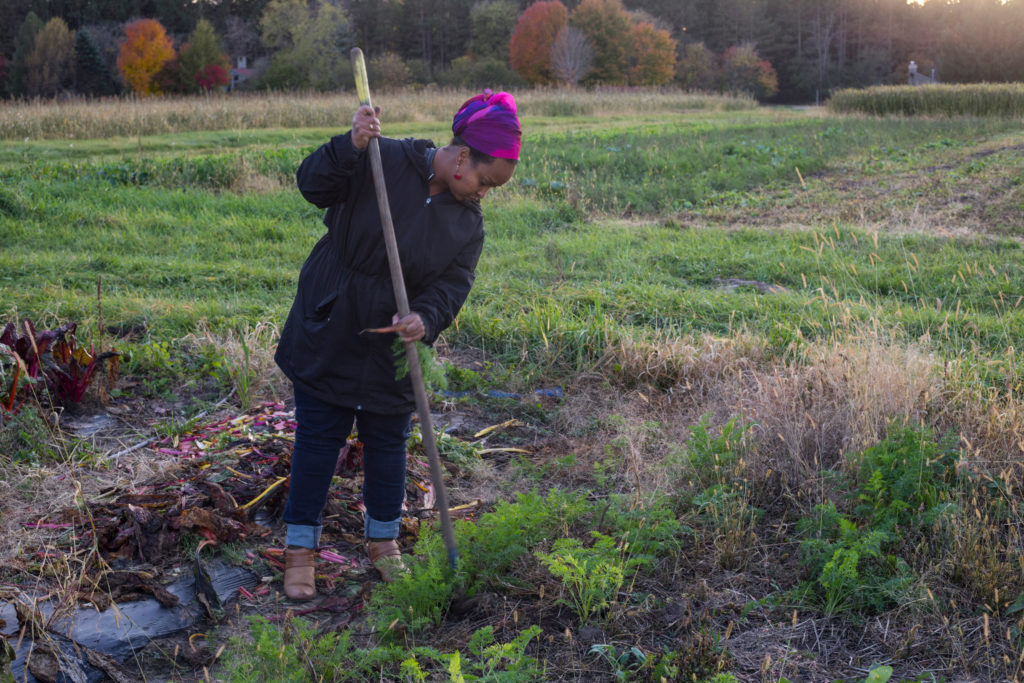
Under a blue-grey October sky, a group of volunteers take down a greenhouse at Big River Farms near the town of Scandia, a 45-minute drive northeast of Minneapolis. The 150-acre incubator farm offers hands-on farmer education, land, and equipment for immigrants and people of color.
The growing season is winding down, but Naima Dhore’s quarter acre plot is still a colorful display of Swiss chard, curly kale and carrots. Her two sons run around in their rubber rain boots, jumping in puddles while Dhore washes the mud off a carrot for them.
“My husband works a lot so trying to juggle between my children and my work and here, it’s a lot. But I’m passionate about farming, I love it, and it’s a beautiful place here,” Dhore said.
In Somalia, Dhore grew fruits and vegetables in a small home garden. When the civil war broke out, she left with her family and eventually resettled in Minnesota.
Several years ago, Dhore and her husband started growing herbs in their apartment, but they wanted to do more. So she turned to YouTube videos to learn about farming and eventually found out about the Big River Farms Training Program.
Through a mix of donors, and private and federal grants, the program has grown over the last ten years. And the funding is set to increase, now that the Minnesota Food Association is becoming part of a larger, more well funded nonprofit called The Food Group.
Laura Hedeen is the program manager at Big River Farms.
“We have an incubator farm that is certified organic, and we lease land and infrastructure to those farmers to decrease the risk they have to take on themselves,” Hedeen said. “We also offer a lot of classes and technical assistance, from production to business planning to marketing – all the aspects that are involved with starting your own farm business.”

Participants can sell produce through a farm share or CSA — Community Supported Agriculture — where customers pay before the season starts, and then receive regular shares of the harvest. The growers also have the option of selling their produce at farmers’ markets or wholesale, either on their own or through Big River Farms.
Participants graduate after three or four years, but they can continue growing food at Big River Farms for an additional three years.
“Right now I’ve been getting a lot of interest from the Somali community, I think in the large part because of Naima. She’s a good spokesperson,” Hedeen said.
The classes, land, equipment, and seeds can add up to $700 or more during the first year – and that doesn’t include the cost of gas. While some participants are able to break even by selling their produce, the upfront costs and time commitment can be prohibitive for some.
Still, this year, a third of the 17 farmers are Somali-American. Abdirizak Bihi, a Somali community organizer, featured Naima Dhore on his KFAI radio show. He says employment opportunities are lacking in the community, but Somali-Americans are entrepreneurs.
“Everyone is selling something or everyone wants to open a business or owns a business. So there’s a future in farming here. It’s very good economically for Minnesota and also the community,” Bihi said.
Participants bring a variety of goals to the program. Some want to get into farming become full-time farmers, some hope to grow food for their family and generate income by selling their produce some money on the side. For Naima Dhore, farming is a commitment to the Somali community.
“My goal and my focus for next year is continue farming and doing education programs where I could support the community to have access to healthy food, and more importantly organic food,” she said.
But holding down a job and working towards her degree means Dhore does most of her farming at dawn, dusk, or on the weekends.
“I actually had my dad come out here one night, and I had to harvest to sell at the farmers’ market the following day, and it was getting really dark. He said, ‘You’re just crazy. I can’t believe you’re out here doing this alone.’ But he gets it,” Dhore said.
There may be some relief in sight. Big River Farms has generated enough interest that the organization will open a satellite farm closer to the Twin Cities. Hedeen is hopeful a site closer to the Cedar-Riverside neighborhood of Minneapolis will make it easier for more Somali-Americans to participate.
 A version of this story aired on Minnesota Public Radio on October 26, 2017
A version of this story aired on Minnesota Public Radio on October 26, 2017
Minnesota:
Video Profile: Finding a piece of home
Naima Dhore is working to introduce subsistence farming to the Somali community in Minnesota.
 A version of this story appeared in OkayAfrica on January 18, 2018
A version of this story appeared in OkayAfrica on January 18, 2018Minnesota:
Somali storytelling takes a new form: hip-hop

MINNEAPOLIS — A group of two dozen young men, many of Somali and East African descent, sit in a makeshift circle of chairs on the first floor of a community theater here in the Cedar-Riverside neighborhood, also known as “Little Mogadishu.”
Some are in school, some have dropped out, but all have come to hear, tell and talk about stories that affect their neighborhood and their country. They tell stories of feeling harassed by police, playing basketball and feeling abandoned by politicians both local and national.
They’re all fans of 20-year-old hip-hop artist and poet, Abduzarak Omar, known as “Sisco,” who organized the group and arranged the space in an effort to raise “political consciousness” among his community’s youth. Omar, with his baggy beanie cap and ponytail, is soft spoken and unimposing but commands the room with a sense of poise beyond his years.
“Culturally back home, it’s like an elder sitting down in a circle with his kids or the neighborhood kids and he tells them the story of their land and the good and bad things that have happened,” said Omar, who moved to America at the age of 8 from Ethiopia. “And it’s kind of a similar thing what we do, we sit around and pick out stories either in the news or things that have happened that are on our minds.”
“Back home” for Omar, whose father is Ethiopian and Somali, is the East African countryside, where traditional storytelling takes a different form. After a day of tilling the land and herding camels, goats, sheep and cattle, families would gather at night around a bonfire in front of their dwellings while they waited for the resting animals to lactate.
Renowned Somali poet and playwright Said Salah Ahmed, a lecturer at the University of Minnesota, said that the traditional form of storytelling and passing on of folklore and proverbs involved a circle that encompassed multiple generations. It was a way that people learned about their identities and the stories spanned every aspect of human life, with moral lessons easily transferable to political, social and economic issues.
But that tradition and style of storytelling has been lost in large part with migration to the United States and the vast changes in lifestyle that ensued — urbanization, the Minneapolis winters and assimilation into American culture.
“In the diaspora, very few people will do the continuation of the telling of stories,” Salah said. “There are no animals to milk and there is gathering in the living room if there is time remaining from homework, but many younger parents that I see on the street will say, ‘how can I tell stories I do not know myself?’”

The reality of adjusting to a new country and finding ways to make a living and raise families is a great barrier to the preservation of history and traditions, said Fatuma Mohamed, a student at the University of Minnesota.
“My father, as a first immigrant to America, is not going to be thinking, ‘Oh how do I preserve my history?’” she said. “He’s thinking, ‘How do I save the livelihood of my family,’ he’s thinking about securing a good job and making sure we can secure good jobs.”
Omar said he only knows about the traditional form of storytelling from what his older family members have told him. But he sees storytelling as a vital part of his community — and his life.
“I feel unhealthy if I don’t let certain things out, and the way I do that is through my art,” said Omar, who spends his days working in the food pantry at the Brian Coyle Community Center and at the Mixed Blood Theater.
Omar was raised by his grandmother and aunt until he moved out on his own at 16. He lost a close cousin, who he refers to as a brother, to a fatal brain aneurysm, and he lost a close friend to a fatal shooting in 2015.
He picked up the name “Sisco,” a reference to an Italian tiger, a few years ago when he was leading a youth group meeting. He said a few older men walked into the room and said something along the lines of “he is the youngest in the room but has his chest out so far he’s like a tiger in the room.”
His raps and poems touch on a wide range of topics — from love stories to deep struggles and empowering, inspirational songs — fitting for his wise persona. One song, “Listen to the Sky,” touches on the death of his close friend Fahmi in 2015 and includes reflections on his life and future.
“My music is about my everyday life; it’s about the lives of the people I’m around,” Omar said. “People sometimes say that I’m too young to have gone through so many things but it’s also because I’m trying to put myself in other people’s shoes and tell their stories.”
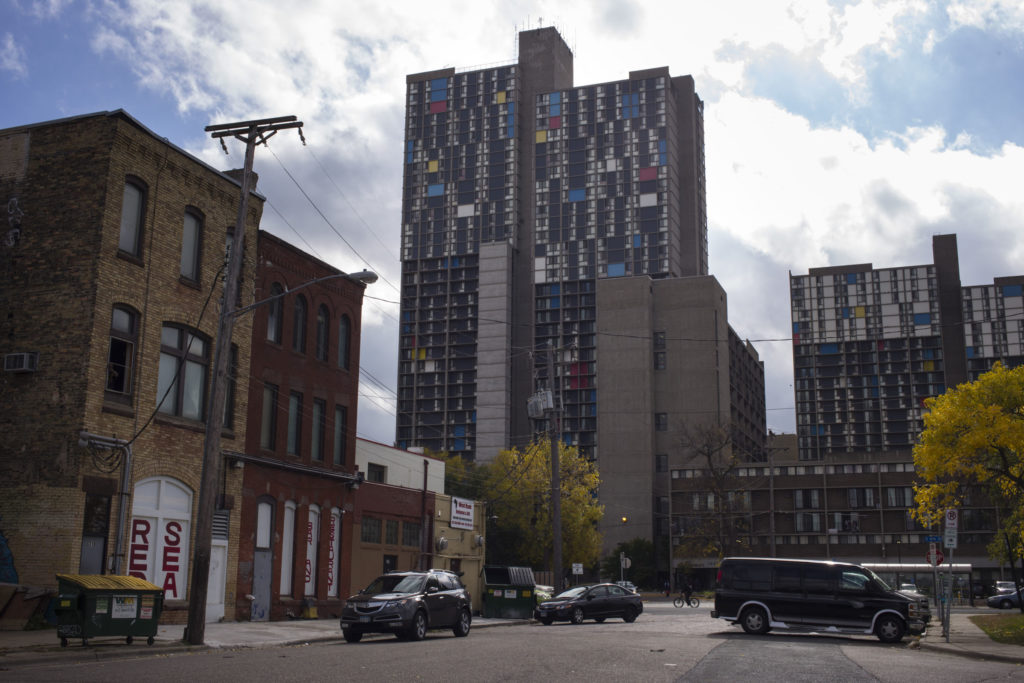
Salah said that hip-hop is not in the tradition of Somali storytelling because it does not bring together a variety of generations and it has yet to be accepted by the elders in the community, but he does recognize its unifying value among youth.
“The traditional form of storytelling used to bring together the elderly, the middle aged and the young — the whole family around the fire,” Salah said. “But now it is only among the youth that are together in these places who tell to each other, I see them reciting and singing about their own values.”
He added: “It is not accepted yet but I hope [the elders] will understand that this is a form of poetry and will accept it one day.”
Omar knows this negative perception among elders well. He decided not to tell his wife’s parents about his poetry and rapping to avoid any difficult conversations. He thinks the lack of respect for hip-hop comes from the prevalence of songs about drugs and guns.
“They hear about the guns and the drugs and think it’s negative music and doesn’t have any talent to it,” Omar said. “In a way, I would say that’s a form of expression and there’s nothing wrong with it if you have an open mind and understand there’s a bigger picture behind all the talking about guns and drugs.”
For Omar, that bigger picture is making a difference in his community and helping his fellow young East African men make good decisions. The youth group he started in 2014, which was then called “Teen Voice” while it was grant-supported, is now restarting as a simple weekly discussion and storytelling forum that aims to connect with some youth who may have lost their way or gotten involved with drugs.
“I could be a lot worse off than I am right now,” said Omar. “I’ve been around a lot of bad things, a bad crowd, but music has always been my getaway.”
Omar has a way of connecting with young members of his community that harkens back to his family roots — the core of which is storytelling.
“I do come from a family of storytellers, I guess, and truck drivers,” Omar said. “My grandfather and all of his sons were well-known truck drivers and one of the families that did a lot of transportation across borders, so when there needed to be a delivery from Ethiopia to Somalia, it would be my family that would do it.”
He said that his family is bilingual, and fluent in Somali, and that storytelling was how they forged relationships: “It was their connection to people, wherever they’ve gone, they’ve been the family accepted by everyone, the family that’s gotten to know everybody.”
For Omar, storytelling is a powerful part of everyday life — and a broad concept, applicable to his music, his outreach to youth and connecting to his family history. The way he tells stories is far from the traditional East African countryside manner of sitting around a bonfire after a day of working the land, but the theme of using stories to learn about culture, identity and life.
“I try to be flexible in my poetry and music,” Omar said. “That comes from learning from a lot of people.”
 A version of this story appeared on MinnPost on January 9, 2018
A version of this story appeared on MinnPost on January 9, 2018


